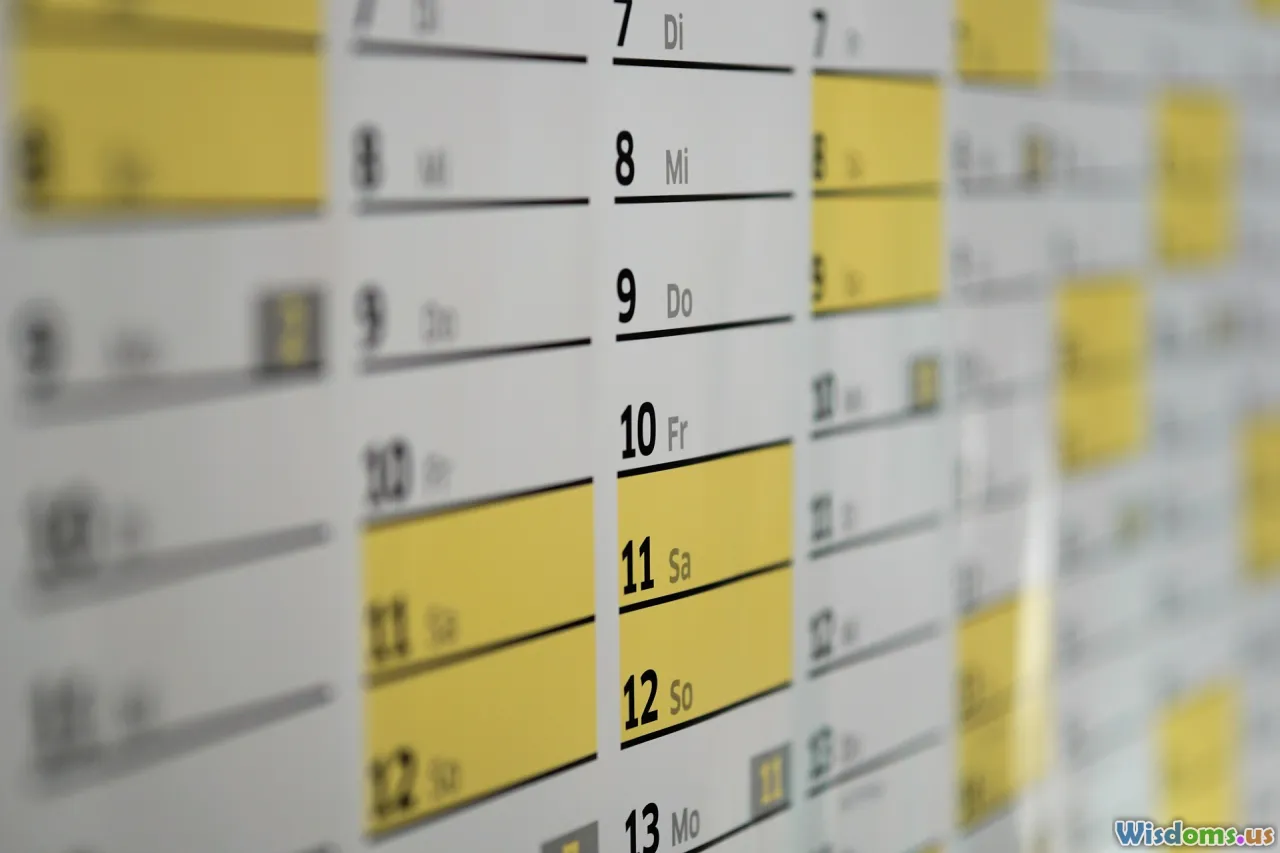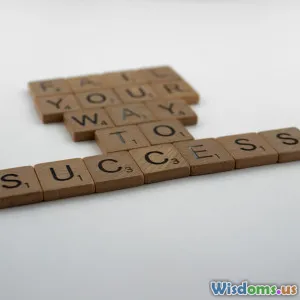
Stress Management Techniques Every Young Professional Should Know
15 min read Essential stress management techniques for young professionals to enhance well-being, productivity, and work-life balance. (0 Reviews)
Stress Management Techniques Every Young Professional Should Know
Navigating the early stages of a career can feel like a whirlwind: tight deadlines, constant digital notifications, and the ongoing pursuit of achievement. As exhilarating as this journey may be, stress is an inevitable companion. While some pressure can motivate us, excess stress erodes our productivity, creativity, and well-being. For young professionals striving for success and balance, mastering stress management techniques isn't just helpful—it's essential. This guide delves into actionable strategies, tailored specifically for people carving their paths in fast-paced workplaces.
Mindfulness and Meditation: Anchoring in the Present

Mindfulness is more than a buzzword—it's a scientifically-backed approach to reducing anxiety and reclaiming focus. For young professionals toggling between meetings, emails, and social obligations, carving out moments of conscious awareness can be game-changing.
What is Mindfulness?
Mindfulness involves paying attention deliberately, in the present moment, and without judgment. This could mean tuning into your breath for 60 seconds before a meeting, noticing the sensation of typing on your keyboard, or observing your emotions as they arise.
Fact: Multiple studies—including one from Johns Hopkins University—show that mindfulness meditation can improve anxiety, depression, and pain, rivalling many standard therapies.
Starter Techniques
- 5-Minute Breathing Meditations: Use productivity breaks to practice guided breathing on apps like Calm or Headspace.
- Body Scan: Before bed, mentally "scan" your body from head to toe, noticing sensations without trying to change them—the scientific journal JAMA Internal Medicine found this practice reduces stress and improves sleep.
- Mindful Commuting: Switch off music or podcasts during your commute once a week and simply notice your surroundings and internal state.
Example: Calming First-Day Nerves
Emily, a 25-year-old marketing analyst, was overwhelmed before her first big client presentation. She took 2 minutes in a quiet corner to do deep belly breaths, focusing on inhaling for 4 counts, holding for 4, and exhaling for 6. The simple act calmed her nerves and clarified her thoughts, enabling her presentation to shine.
Physical Activity: Moving Stress Out

Sitting for hours—even in the name of productivity—can increase physical and mental tension. Incorporating movement isn't just about fitness goals; it's a direct way to flush out stress hormones like cortisol and boost feel-good brain chemicals.
Why It Works
The anxiety-busting effect of exercise is well-documented. The Mayo Clinic reports that regular aerobic activity literally acts as a “natural stress reliever.” It also improves sleep, enhances mood, and sharpens cognitive function—all vital for young professionals.
Accessible Fitness Strategies
- Micro-Workouts: Even a 5-minute brisk walk, desk stretches, or ten jumping jacks between tasks can reset your nervous system.
- Group Classes: Participating in social exercise (like Zumba or Pilates) offers community support alongside stress relief.
- Active Meetings: Suggest “walking meetings” to get outside and stimulate creativity.
- Yoga and Tai Chi: These ancient practices harmonize breath, movement, and focus—Harvard Medical School recommends yoga as a top intervention for managing stress.
Example: Movement as a Midday Reset
Rohan, a software engineer in his first year at a tech startup, began experiencing afternoon slumps and tension headaches. By setting a recurring calendar reminder to stretch and move every 60 minutes, he noticed not only a reduction in headaches, but also a boost in his afternoon productivity.
Setting Boundaries: The Courage to Say No

Ambitious professionals often fall into the trap of over-commitment—taking on extra projects, constant after-hours Slack replies, or saying "yes" to everything for fear of missing out. But boundaries are a core safeguard for mental health.
What Boundaries Look Like
- Digital Limits: Silencing notifications after hours, using “Do Not Disturb” modes, or clarifying your availability with colleagues.
- Task Boundaries: Learning to diplomatically decline new assignments if your workload is at capacity.
- Physical Boundaries: Setting a fixed time to end the workday, even if everything isn’t "done."
Tips for Assertive Communication
- Practice saying, "I would love to help, but I’m unable to take on more tasks at this time."
- Before agreeing, use, "Let me check my current commitments and get back to you tomorrow."
- Remember: Respecting your own limits sets a healthy precedent for your team.
Case in Point: Protecting Your Downtime
Sara, an entry-level account manager, faced burnout when responding to client emails late at night. With her manager’s support, she implemented a policy: responding to non-urgent messages during office hours only. Her anxiety dropped, and her productivity during business hours soared.
Smart Time Management: Working Smarter, Not Just Harder

Stress often stems from feeling like there’s not enough time to juggle work and life aspirations. Strong time management empowers you to be both present and productive.
Key Frameworks to Try
- The Eisenhower Box: Categorize tasks as urgent-important, important-not urgent, urgent-not important, and neither. Prioritize time and energy accordingly.
- Pomodoro Technique: Work in laser-focused 25-minute bouts with 5-minute breaks. Use simple timers or apps like Focus Booster.
- Batching Tasks: Chain similar activities together (like answering emails at scheduled times) to minimize "task switching" stress.
- Calendar Blocking: Proactively carve out time in your calendar for deep work, exercise, socializing, and breaks.
The Power of the Daily Reset
Take 10 minutes every evening to review your accomplishments and prioritize the following day. This small habit, endorsed by billionaire entrepreneur Tony Robbins, can dramatically decrease "brain clutter" and the anxiety of being overwhelmed.
Example: Transforming Chaos Into Control
Luis, a junior sales associate, started the year feeling constantly behind. By using the Eisenhower Box and blocking two "deep work" hours on his calendar, he reduced overtime and stopped missing deadlines. The feeling of mastery replaced his overwhelm.
Sleep Optimization: Rest as a Professional Skill

Sleep deprivation isn't a badge of honor. Cutting-edge research shows that adequate rest is foundational for learning, problem-solving, emotional resilience, and health—all key for high performers.
How Stress Impacts Sleep (and Vice Versa)
Unmanaged stress triggers insomnia, and sleep loss increases sensitivity to stress in a destructive loop. The CDC recommends that adults aged 18-60 get at least 7 hours of sleep nightly.
Stress-Less Sleep Rituals
- Tech Curfew: Switch off screens at least 30 minutes before bed—blue light disrupts the production of melatonin.
- Wind-Down Rituals: Read, journal, or practice gentle stretching in dim lighting.
- Consistent Timing: Aim to sleep and wake at the same times daily—even on weekends.
- Sleep-Friendly Spaces: Declutter, darken, and cool your bedroom; invest in comfortable bedding.
Example: Night Routines With Impact
Kay, a graduate trainee, suffered from restless sleep after hectic days. After committing to a no-screen rule and 10 minutes of journaling before bed, her insomnia eased and her outlook improved. Refreshed mornings enabled her to face complex tasks with more ease.
Social Connections: Leaning on Community

Work life is easier—and healthier—when you don’t go it alone. Harvard’s landmark "Grant Study" found that quality relationships are the strongest predictor of happiness, even outstripping professional achievement.
How Social Support Buffers Stress
Strong social ties reduce feelings of isolation and provide outlets for emotional sharing and laughter. Networking and mentorship create opportunities for support, learning, and perspective during difficult periods.
Ways to Build Meaningful Connections
- Regular Check-Ins: Make it a habit to connect with friends, family, or mentors—even if only virtually.
- Interest Groups: Engage with hobby clubs, alumni networks, or sports leagues in your city for new friendships.
- Mentorship: Identifying a mentor (or being a mentor) provides trusted sounding boards for workplace stressors.
- Volunteer Work: Volunteering reduces stress and enhances social belonging—according to a Harvard Health review, it’s even correlated with increased happiness.
Showcase: Networking That Nurtures
Jeremy, new to his field in a bustling urban center, felt unnoticed and disconnected. Attending a local young professionals’ book club rekindled his energy; it gave him not just networking benefits, but solid friendships able to empathize with and support his ambitions.
Nutrition: Eating Your Way to Resilience

The connection between food and mental state is powerful. Busy young professionals often reach for sugary, processed snacks for quick energy spikes that end up amplifying stress and fatigue.
Smart Strategies for Nourishment
- Meal Prep: Cooking in batches on weekends makes it easier to dodge unhealthy convenience foods midweek.
- Balanced Snacking: Keep nuts, fruits, or yogurt at hand. Research from the British Journal of Health Psychology shows that consuming fruits and vegetables boosts psychological well-being.
- Hydrate: Even mild dehydration can heighten feelings of anxiety.
- Limit Stimulants: Excess caffeine and energy drinks may trigger anxiety and worsen sleep.
Example: The Mindful Lunch
Alex, a young project manager, realized that skipping breakfast and snacking on vending machine purchases all morning left him jittery and unfocused. Switching to overnight oats at home and packing veggie-rich salads led to more stable energy and fewer afternoon cravings.
Seeking Professional Help: When to Reach Out

Sometimes, self-guided strategies aren’t enough—and there’s no shame in seeking expert support. Modern workplaces increasingly offer mental health resources, recognizing that well-being drives innovation and retention.
Signs It’s Time for Support
- Persistent sadness, anxiety, or irritability despite lifestyle changes
- Disruption in sleep, appetite, or relationships lasting over two weeks
- Difficulty concentrating or enjoying daily activities
Resources for Young Professionals
- Employee Assistance Programs (EAPs): Confidential services often include free counseling sessions.
- Hotlines: In the US, dialing 988 connects with counselors through the Suicide and Crisis Lifeline.
- Campus or Community Clinics: Affordable counseling tailored for early-career adults is increasingly available, both online and in-person.
Real-World Example
Megan, fresh out of college and starting in a competitive law firm, recognized that the chronic anxiety she felt wasn’t shifting. Through her firm’s EAP, she accessed short-term counseling, which helped her learn coping strategies and recognize when to rest versus when to push ahead.
Building a thriving, dynamic career doesn't require sacrificing your peace of mind. The techniques above aren't a one-size-fits-all checklist—you'll need to experiment to discover what suits your life stage, personality, and professional demands. The thread that ties them together is self-awareness: noticing when stress takes hold, and confidently applying tools that restore balance. Master these skills early, and they'll serve you through every twist in your professional journey.
Rate the Post
User Reviews
Popular Posts















